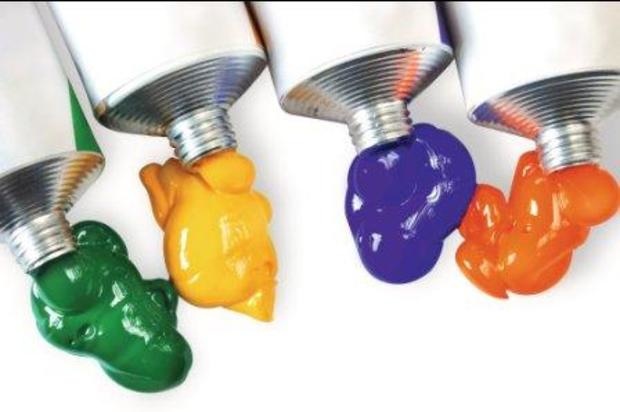The global polymer emulsion market is anticipated to create lucrative growth opportunities over the forecast period by exhibiting a CAGR of 6.1% from 2022 to 2032. The global market reached a valuation of US$ 23,867.2 Million in 2022 and is anticipated to top a valuation of US$ 43,147.5 Million by the end of the forecast period. According to Future Market Insights’ historical analysis, the global polymer emulsion market recorded a stable CAGR of 4.7% from 2015 to 2021. The paints & coating, and paper industry, in particular, has seen significant growth in its customer base.
The process of combining two liquids with different densities is known as an emulsion (oil-water). During the process of emulsion polymerization, a monomer is emulsified in the presence of water and a surfactant, particularly sodium stearate, to create a polymer emulsion. Furthermore, a procedure known as polymer emulsion synthesis yields polymers with high molecular weight and extremely low volatile organic components. Products made from polymer emulsions based on polyvinyl acetate have a considerable impact on the adhesive, paint, and coatings industries.
Styrene, acrylonitrile, butadiene, acrylate ester, and methacrylate ester are the monomers that are most frequently employed in the emulsion polymerization process. Specialty chemicals including offset inks, adhesives, paper & paperboards, paints and coatings, textiles, and construction chemicals are produced using polymer emulsions, which are specialty polymers. In order to efficiently prevent garments from being damaged and to preserve the packaging’s visual appeal, the polymer emulsion coating lends paper resistance to oil and grease. The rising application of Polymer Emulsion in various industries and the increasing awareness about eco-friendly products drive the market for polymer emulsion.
For insights on global, regional, and country-level parameters with growth opportunities from 2022 to 2032 – Download a sample report @ https://www.futuremarketinsights.com/reports/sample/rep-gb-1146
Report Highlights
It has been predicted that emulsions made up of bio-based polymers and water are likely to offer tremendous development prospects. Over the forecast period, rising consumer awareness of green construction is expected to fuel demand globally.
According to FMI Analysis, the automotive industry is predicted to bolster the demand for polymer emulsions since it is utilized in LASD coatings and can be tailored for flexibility, adhesion, and filler content.
Another excellent feature for manufacturers is that they attach to metal components without difficulty. Utilizing polymer emulsions has additional benefits, such as less expensive application and improved consistency and repeatability of placement.
Recent Developments
The development of paints and coatings consisting of low VOC content or simply no VOCs is likely to be supported by the movement in consumer preference toward the use of environmentally friendly paints and coatings and the favorable regulatory environment.
High molecular weight polymers combined with negligible viscosity are created using the emulsion polymerization process. However, polymers can also be customized based on how they will be used.
Styrene-butadiene polymer emulsions are used to formulate these coatings. This is attributed to its ability to accommodate high filler loadings, compatibility with anti-corrosion pigments, and its range of strength and flexibility to meet the demands of harsh operating environments. With all these above-mentioned facts it is expected that growth in the automotive industry drives the demand for polymer emulsion.
Competitive Landscape
To efficiently meet the rising industrial demand for polymer emulsion applications within the end-use industries, it comprises building & construction, chemicals, automotive, and textile & coatings, among many others.
Furthermore, market participants are constantly improving the production process and formulations to increase their global footprint and better position themselves to take advantage of the burgeoning market opportunity, some major companies in the market are engaging in mergers and acquisitions, and new entrants to the sector are also doing the same.
In February 2022, One of the leading market players, BASF industries developed a unique polymer architecture with innovative cross-linking capabilities with ultra-low-VOC coating formula.
Buy Now @ https://www.futuremarketinsights.com/checkout/1146
More Insights into the Polymer Emulsion Market
The North American region is anticipated to dominate the global polymer emulsion market over the valuation period. The region held the majority of shares in global revenue in 2022. The size of the North American polymer emulsion industry is expected to grow significantly in the coming years.
Regional demand is primarily driven by widespread expansion in the automotive sector. Automakers in the region are rapidly ramping up vehicle production to meet rising consumer demand.
Market Segmentation
By Product Type:
- Acrylic
- Styrene Butadiene Latex
- Vinyl Acetate Polymers
- Polyurethane Dispersions
- Others (hybrid epoxy, silicon etc.)
By Application:
- Adhesive & Sealants
- Paints & Coatings
- Paper & Paperboard
- Others
By End-Use Industry:
- Building & Construction
- Chemicals
- Automotive
- Textile & Coatings
- Others
About Future Market Insights (FMI)
Future Market Insights (ESOMAR certified market research organization and a member of Greater New York Chamber of Commerce) provides in-depth insights into governing factors elevating the demand in the market. It discloses opportunities that will favor the market growth in various segments on the basis of Source, Application, Sales Channel and End Use over the next 10-years.
Contact:
Unit No: 1602-006
Jumeirah Bay 2
Plot No: JLT-PH2-X2A
Jumeirah Lakes Towers
Dubai
United Arab Emirates
LinkedIn| Twitter| Blogs
For Sales Enquiries: sales@futuremarketinsights.com

